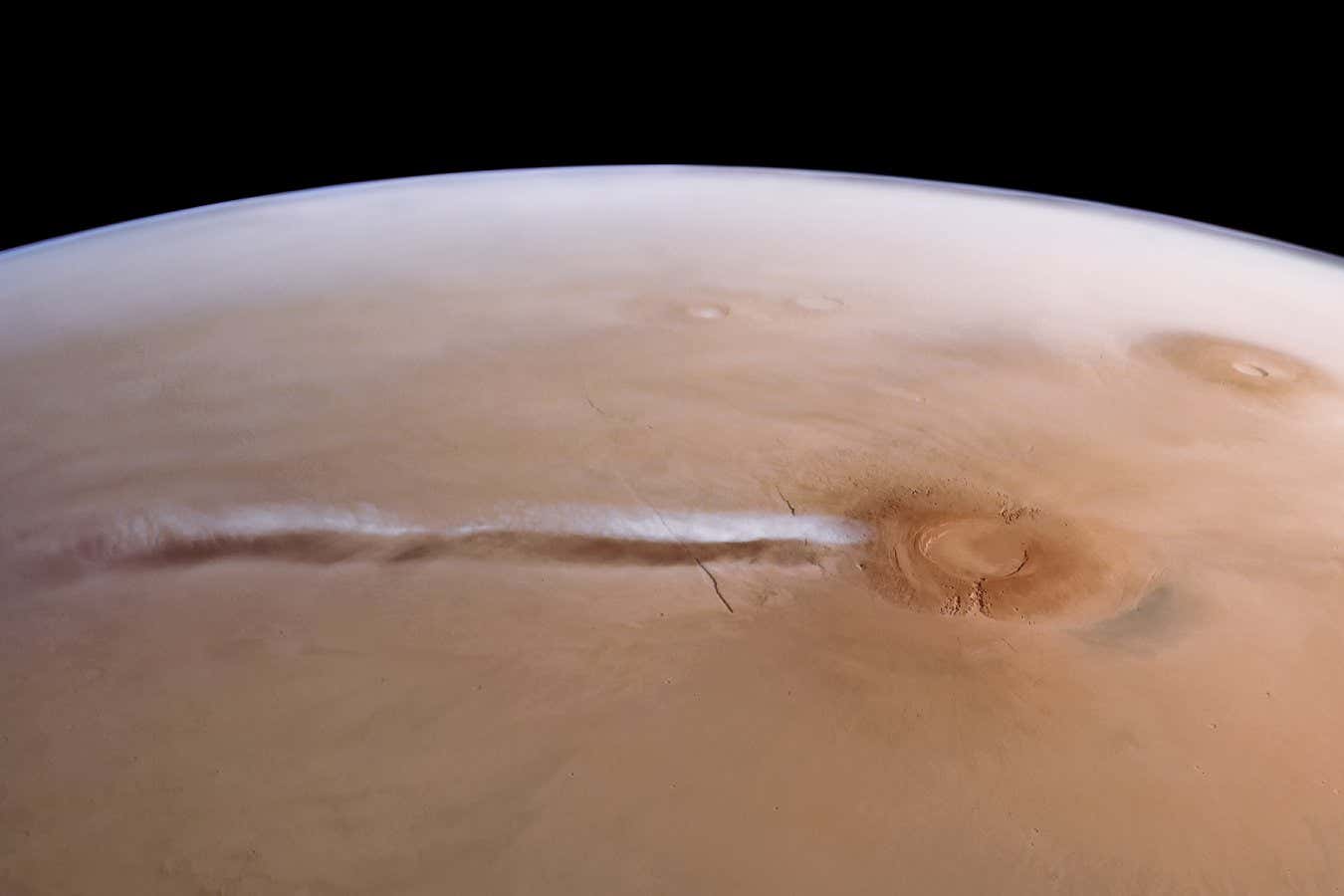
Unusual clouds form over the Martian volcano Arsia Mons each year
ESA/DLR/FU Berlin/J. Cowart CC BY-SA 3.0 IGO
A thin cloud that appears on Mars each year has baffled astronomers ever since it was first spotted, but it may be the result of a moisture-rich atmosphere that was thought impossible.
Each winter, an 1800-kilometre-long cloud forms near Mars’s Arsia Mons volcano in the south of the planet, appearing and disappearing every day for nearly three months. The conditions in Mars’s atmosphere are markedly different to Earth’s, such as containing many more small dust particles that can trigger water vapour in the air to condense into cloud particles. This produces many cloud patterns that we don’t see on Earth, but simulations that include these high dust levels in Martian atmospheres still can’t form the Arsia Mons cloud’s distinctive features.
Now, Jorge Hernández-Bernal at Sorbonne University in France and his colleagues say they can reproduce the cloud’s features if there is an extremely high amount of water vapour in the air, something that was previously thought impossible in Mars’s atmosphere because of the high dust levels. These high water vapour levels help cloud particles form through an alternative, dust-free route called homogeneous nucleation.
When the researchers ran simulations of the atmosphere around Arsia Mons with much higher levels of water in the air, the resulting cloud looked strikingly similar to the real cloud, with a long tail stretching away from the volcano which then spreads out to form what is known as an outburst.
“Homogeneous nucleation requires, in the case of Mars, a much higher level of [water] saturation. This is why, in principle, we thought that this was not possible on Mars, or was very unlikely,” Hernández-Bernal told the Europlanet Science Congress (EPSC) in Helsinki, Finland on 10 September. “But in the last decade, we have learnt that there is, in fact, supersaturation on Mars.”
Topics:
Source link : https://www.newscientist.com/article/2495985-a-weird-cloud-forms-on-mars-each-year-and-now-we-know-why/?utm_campaign=RSS%7CNSNS&utm_source=NSNS&utm_medium=RSS&utm_content=home
Author :
Publish date : 2025-09-11 17:00:00
Copyright for syndicated content belongs to the linked Source.